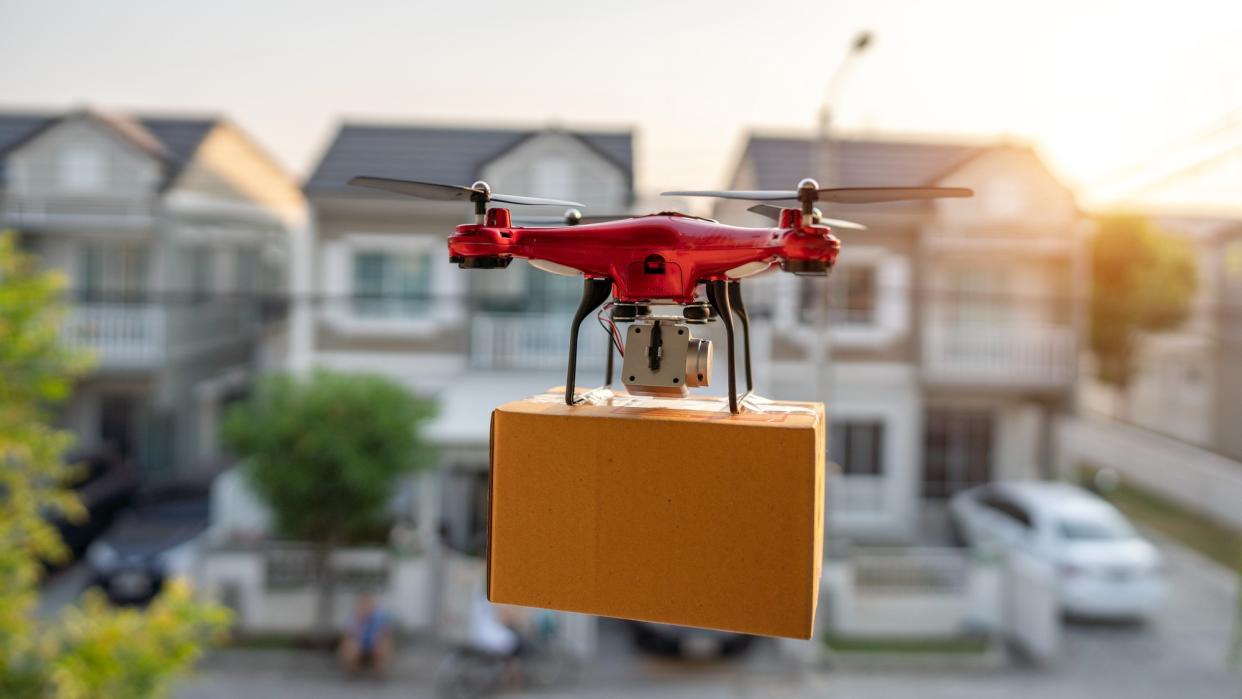The pros and cons of drone delivery

In the age of online shopping, items are constantly being delivered all over the country, all the time. Usually, those deliveries come from planes and trucks, but companies like Amazon and Walmart are toying with a new solution to facilitate deliveries and reduce the manpower required: drones. The remotely operated flying machines can get to any location using GPS coordinates — and can get there quickly. Despite this, their use cannot yet be implemented widely and can also pose logistical and privacy issues.
Pro: Reduce reliance on vehicles
Relying on drones can be an effective way to reduce transportation emissions and curb climate change. "If delivery drones gain widespread usage, it would reduce reliance on vehicles for many companies," Investopedia explained. "If widely adopted, it could help many countries meet emissions targets set in various global agreements." Online shopping is only going to grow and, accordingly, so will deliveries. Trucks require fossil fuels and produce emissions that drones can avoid, especially if the delivery is local. "Some things just don't make sense — like why use a two-ton car to deliver a two-pound burrito?" James Campbell, a professor of supply chain and analytics at the University of Missouri at St. Louis told Builtin. "That's inherently inefficient. So if you could do that with a drone, maybe that makes a lot of sense."
Con: Poses a privacy risk
"Widespread use of drones can be expected to increase privacy concerns among citizens already nervous about corporate and government data collection," Investopedia noted. Drones have a history of surveillance use, and many of the features used for that purpose would also be necessary for deliveries. The source expounded, "Drones typically use a camera and GPS to navigate delivery destinations, which many believe to be intrusive." In general, the public may not be comfortable with drones flying over their neighborhoods. Invasive bonus: Overhead cameras can potentially see into homes or yards, especially in more spread-out areas.
Pro: Faster deliveries
When ordering from nearby, drones can cut delivery times substantially. Trucks and planes "can be slow and prone to traffic and weather delays," whereas, "drones can navigate around these obstacles and deliver packages directly to customers' homes or businesses in a fraction of the time," according to Essential Designs. This could revolutionize same-day delivery, as well as delivery of perishable items, and "could be especially useful for urgent or time-sensitive deliveries, such as prescription medications or emergency supplies."
Con: Regulatory issues
Drone takeoffs and landings in the U.S. "require meticulous scrutiny by the FAA [Federal Aviation Administration] and local officials," according to Insider Intelligence. This can make widespread implementation difficult. Individual states have varying laws regarding drones and don't do much more than enforce existing federal regulations. Bobby Healy, founder and CEO of drone delivery company Manna, told Builtin, "It's still unclear when scaled delivery will be allowed to happen and under what systems it will happen."
Pro: Access to hard-to-reach locations
Drones can have easier access to remote and rural areas that may not have the infrastructure required for planes and trucks. Drones are "an ideal solution" for expanding delivery reach because they "don't need infrastructure," Campbell told Builtin. Drones can land in any spot and don't require open spaces or pavement. This could be especially effective in disaster zones or medical emergencies. "If you're vaccinating children for measles and mumps, you're not sending 50 kilos," Campbell said. "You're sending a small amount of product. And it needs to go fast because it needs to be refrigerated."
Con: Logistics could be an issue
Drone delivery could pose logistical issues, especially in densely populated areas. The technology would need to be capable of maneuvering around buildings and wildlife like birds. Also, deliveries to specific apartments would be difficult without human intervention. "In this country, we have an incredible road system," Campbell told Builtin. "So you can get almost anywhere fairly quickly by truck or car. And that makes it much harder for drones because the drones now have to compete against something that's been fine-tuned and optimized."

